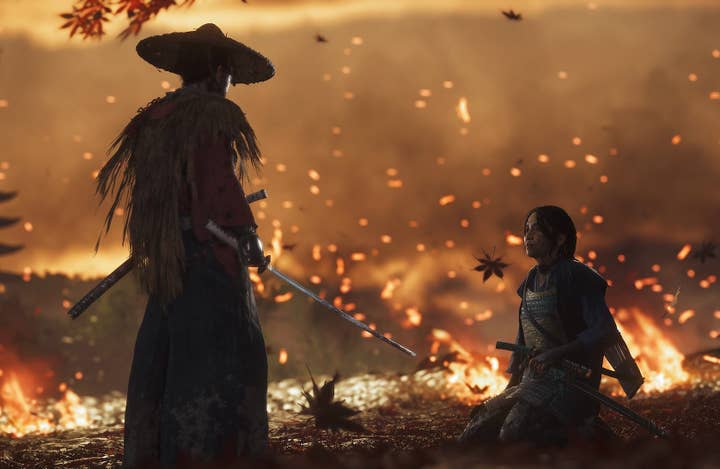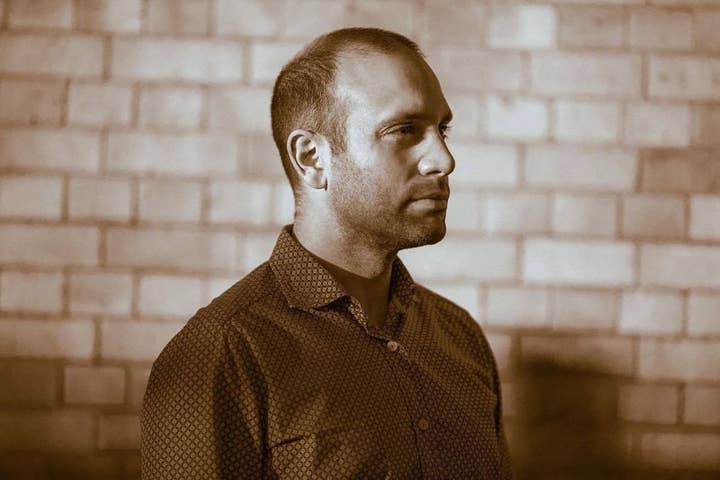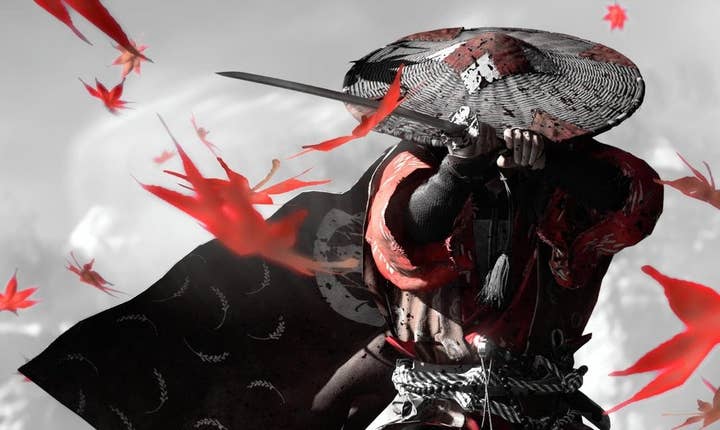Composing the blockbuster soundtrack of Ghost of Tsushima
Written to reflect the game's historical setting, Ilan Eshkeri discusses the creative and practical process behind the PlayStation exclusive's music
Music is central to the narrative force of any game. Whether the swelling of an orchestra completes the emotional climax of its unfolding plot, or the nuanced arrangements of an electronic soundscape reflect its thematic developments, music plays a vital role in realising storytelling potential.
This, at least, is the position of composer Ilan Eshkeri. "Video games are just the latest iteration of how we tell stories," he tells Gamesindustry.biz, "and my job is to tell the emotional narrative through the medium of music."
While Eshkeri is best known for scoring Hollywood films, ballets and exhibitions, he most recently composed the soundtrack to Sucker Punch Productions' Ghost of Tsushima. An ode to the historical fantasy of famed Japanese director Akira Kurosawa, the game deliberately apes the visuals and narratives of samurai films to serve an epic tale of moral conflict and tragedy. Eshkeri had the task of composing a similarly bold soundtrack that appropriately complimented the narrative-driven action.
"Sucker Punch were possessed with an obsession, and I really admired that"
Central to this was authenticity. Just as the game's visual representation of Tsushima was created to capture the geography, culture, and history of the island during the first Mongol invasion, its soundtrack was written to authentically reflect the music of feudal Japan. Eshkeri's dedication to sonic accuracy formed the central component of the score and tied the music to the game's wider visual and thematic ambitions.
"It came from the Sucker Punch guys," he says about the decision to compose the score for authenticity. "They went to the island of Tsushima and collected leaves so that they could make weeds more authentic. They were possessed with an obsession, and I really admired that."
Not a master of Japanese music, Eshkeri immersed himself in theory and sonics to better understand its hallmarks: "I spent time learning about Japanese scales and the way the instruments worked. I spent a lot of time with the musicians, learning how the instruments played, how to write them, their books. And then I also found music from the island of Tsushima -- folk music, monk music -- and I took all these things and reimagined them."

Such reimagining involved finding ways to assimilate Japanese instrumentation with Western classical music theory. The pentatonic scales that form the foundation of traditional Japanese music don't translate well to chromatic, 12-note Western instrumentation, and Eshkeri had to look for novel ways of writing for Japanese instruments that both preserved their cultural heritage and lent them to symphonic orchestration.
Leaning into music theory to construct new chordal harmonies from Japanese scales where none previously existed proved fruitful. Elsewhere, it was more a case of exploring more immediate ways of embracing Japan's rich musical history.
"I spent time learning about Japanese scales and the way the instruments worked. I spent a lot of time with the musicians"
"As I studied and I researched, I found this instrument called the biwa," says Eshkeri. "Not because of the way it sounds, but in every other sense it's the most war-like of instruments. It's the instrument that the samurai learnt to play. They would sing tales of their exploits with it."
The historical-cultural legacy of the biwa added an air of Samurai-specificity to the music, while its distinctive twang and flexibility was well suited to the melodic lines of the score.
"As the tradition of the samurai disappeared in the last century, this art disappeared as well," Eshkeri says. "I may be romanticizing this, but no one's corrected me yet: there was one great master left of the biwa and that person taught only a handful of other people; one of those people is a lady called Junko Ueda.
"Junko is herself a great master of the biwa, and she plays this piece of music which is The Tale of the Heike. You can hear this actually on the album. I met her, she told me about the instrument, and we recorded it."
Involving maestros like Ueda in the recording, Eshkeri was not only able to leverage their mastery of medieval Japanese instruments but their wider knowledge of traditional Japanese music. The Tale of the Heike that Eshkeri mentions is a centuries-old Japanese story performed alongside biwa accompaniment, and melodic phrases of the story can be heard on several tracks in the game's soundtrack.
This technique of quoting traditional Japanese melodies -- and sometimes rearranging them to suit Western instrumentation -- rooted the score in a Japanese foundation while providing a platform for Eshkeri's original additions. At other times, trial and error proved more successful than following a definitive creative procedure
"I like to just sit with the characters in my mind, try and make them my friends, and then try to express their emotional journey"
"I just wrote and wrote and wrote," Eshkeri says. "I transcribed folk music and religious monk music. I explored instrumentation and did work with instruments that never even made it into the score. I wrote two, probably three times as much music as there is in the score, added loads of music with lots of feedback. We really went on a journey to discover what it was we were trying to make.
"I always write a lot more than ends up in whatever thing I'm writing. It's hard to tell when you're in it. Sometimes if you listen back you're like, 'Oh my god, I can't believe I wrote that, that's terrible, no wonder why they didn't like it.' But when you're in it, it's hard to tell."
Although Eshkeri's creative direction was driven by the thematic and historical focus provided by Sucker Punch, the score was composed largely in isolation from the game itself. Pieces were written on Eshkeri's understanding of the story and characters, and only tailored to gameplay sequences when necessary.
"One of the things I like about work on games is that the vast majority of it is worked away from screen," he says. "I always like to get the idea, get the story. When I do film, if there's a book, I like to read the book. It's hard to get into the characters, and I like to just sit with the characters in my mind, try and make them my friends, try to get to know them, and then try to express their emotional journey. So I don't feel the need to do it in front of the screen."
This isn't dissimilar from his work on film, in which he focuses on the compositions of his music rather than its on-screen application, but the transition from film to game did throw up new technical demands that influenced his writing. As an adaptive soundtrack, the Ghost of Tsushima's music responds to the player's actions, and lines of instrumentation are injected or withdrawn in real-time to accord with the gameplay.
"The technical challenge of that is that it needs to be layered, so that there could be more intensity and less intensity," Eshkeri says. "You need to be able to do it in a in a clever and interesting way. The things that make it up have to be different enough that they maintain interest, especially if they're on their own."
"When the music is really great, you're not aware of it... You're unaware of it but it still has a profound effect"
While pieces in a film score may be rearranged to better suit particular scenes, the variability of an open world game like Ghost of Tsushima demands even greater versatility to the songs' arrangements.
"I like to describe it like a Big Mac. A Big Mac's got lots of different layers of things and they're all interesting in their own way. And lots of music does, but lots of music has a filler bit in the middle that adds some thickness -- that's like the very middle bread bit of the Big Mac. That middle bit would not be interesting on its own.
"In a video game, every single layer has to be interesting on its own, because it may be on its own. That is both a technical and an artistic challenge. You've got to really write with a lot of care and attention in every single part of the music. It's easy to say, 'Oh, well the violas are just filling that bit out in the middle of the strings,' but I think it gets really boring being a viola player. I think, how can I turn their part into something a bit more tuneful, a bit more unexpected, a bit more interactive with other stuff that's going on?
"And if you do that, then that's really helpful for the for the guys who are building it into the game engine, because when they take all the other stuff away, they're not left with something boring."

Composing for such variability not only allowed innocuous lines that might otherwise be overlooked by the audience to shine through, but also pushed Eshkeri to consider new ways of writing.
"I spent more time on the drums for this than any other project I've ever done," he says. "Something happens in the music, and then the drums will make a repeat, or a reflection, or an answer phrase to the rhythmic thing that happened in the orchestra. So when you take the drums by themselves, they are like real taiko drums, full of question and answer phrases, and really feel like a piece of music on their own."
Despite this, his approach to Ghost of Tsushima's soundtrack shares more similarities than differences with his work on film. Eshkeri wrote the music to supplement, but not overpower, the game's storytelling. He believes that if the music of a film or game draws attention to itself, it breaks the illusion into which the audience has been drawn and spoils the wider artistic experience.
"When the music is really great, you're not aware of it," Eshkeri says. "You still at the end of it go, 'wow, that music was brilliant,' but you weren't thinking that while you were watching the film, and I hope you're not thinking that while you're playing the game. I hope you just stop playing the game, you walk away and go, 'wow, that music.' You're unaware of it but it still has a profound effect."
Supporting narrative storytelling through nuanced arrangements has been central to Eshkeri's past work, and he sings high praise for the potential of video game soundtracks to innovate in this area.
He concludes: "The video game is in a golden era, and it's an era where the technology is still evolving. It's a very positive creative environment where everyone's like, 'sure, let's try that, let's do this.' It's innovative and it's interesting. It's the newest way to tell a story, and so I find that it's a very fertile place to be creative."



